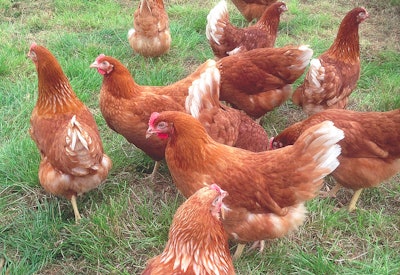
Decreased consumer demand, increased supply puts downward pressure on organic feed prices
The same factors that kept organic feed prices low despite poor production last year could cause prices to fall further this year in the face of slowing consumer demand.
A 14% increase in organic field crop production offset an otherwise dismal harvest last year, keeping prices within reason for critical organic commodities such as corn and soybeans, according to market data from online trading platform Mercaris. Growth in the organic sector is expected to continue through the end of 2020 as more farms convert to organic operations in pursuit of profit premiums, but consumer demand is not expected to keep pace.
“We’re in a moment in the organic sector where we’re seeing bearish pressures on the market, and somewhat unexpected bearish pressures,” said Ryan Koory, director of economics at Mercaris.
Assuming the weather holds this year, the U.S. could see a dramatic increase in supplies of organic commodities, especially corn, in the months to come as newly organic farms recover from the poor 2019 harvest. But while organic grain and feed may be easier to come by this fall, it may not be needed.
Sour weather prompted an increase in forward purchasing in 2019 as producers sought to get ahead of a potential increase in prices. As a result, Koory said, many organic livestock operations still have substantial feed in storage.
On top of that, decreasing consumer demand for certain organic animal products could drive down demand for feed this year.
Organic dairy, Koory said, has been declining for at least two years, driven by a shift away from fluid milk and toward plant alternatives, particularly among the consumer base that would be more inclined to seek out organics to begin with.
Poultry has become the rising star of organics in more recent years, with broiler meat production growing 3-6%, and eggs growing 8-9% year over year, for the past 2-3 years. Last year, however, brought an end to this trend. While organic egg production grew about 3%, broilers slaughtered dropped 2% last year, Koory said.
Prices for feed have, consequently, continued to drop, even from last year’s relative lows. Organic corn is going for about $7 per bushel, compared to $8-9 per bushel last year, according to Mercaris.
Organic broiler production has picked back up in the first three months of 2020, showing 5% growth year-over-year. But with the new coronavirus and a possible recession looming on the horizon, Koory isn’t sure that growth will continue. Organic food items remain a luxury that commands premium prices, and if consumers find themselves financially strapped, demand will drop.
Most likely, Koory said, organic producers are “looking at modestly growing demand for feed.”
However, going organic remains an enticing option for many farmers, with the price margins between organic and conventional corn still promising returns above and beyond the increased operating costs. As of December, conventional corn was selling for $3.63 per bushel, meaning many conventional farmers are still operating in the red while organic producer claim prices twice as high, Koory said.
“The real long-term question,” he said, “is where is that balancing point for the premium, and that’s wrapped up in how consumer demand shapes up in the next 5-10 years.”









